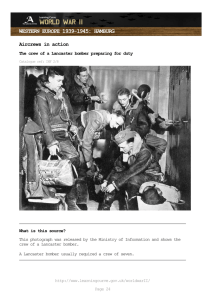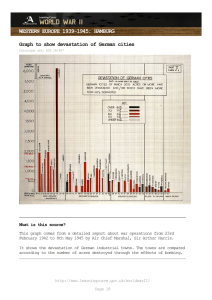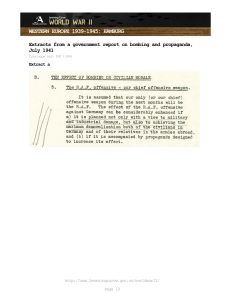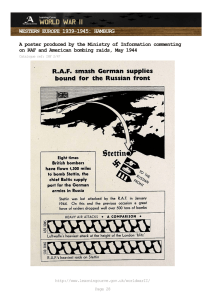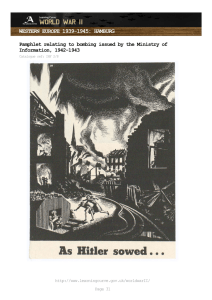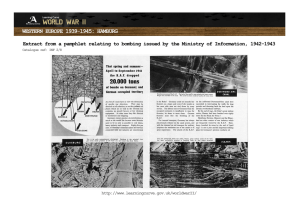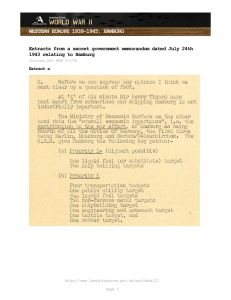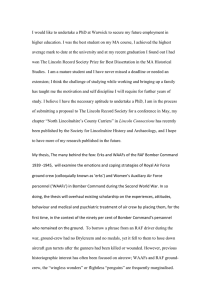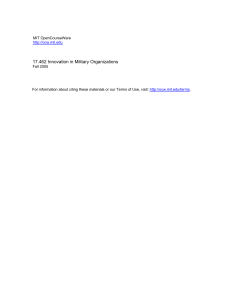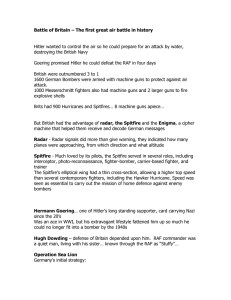WESTERN EUROPE 1939-1945: HAMBURG What is this source?
advertisement
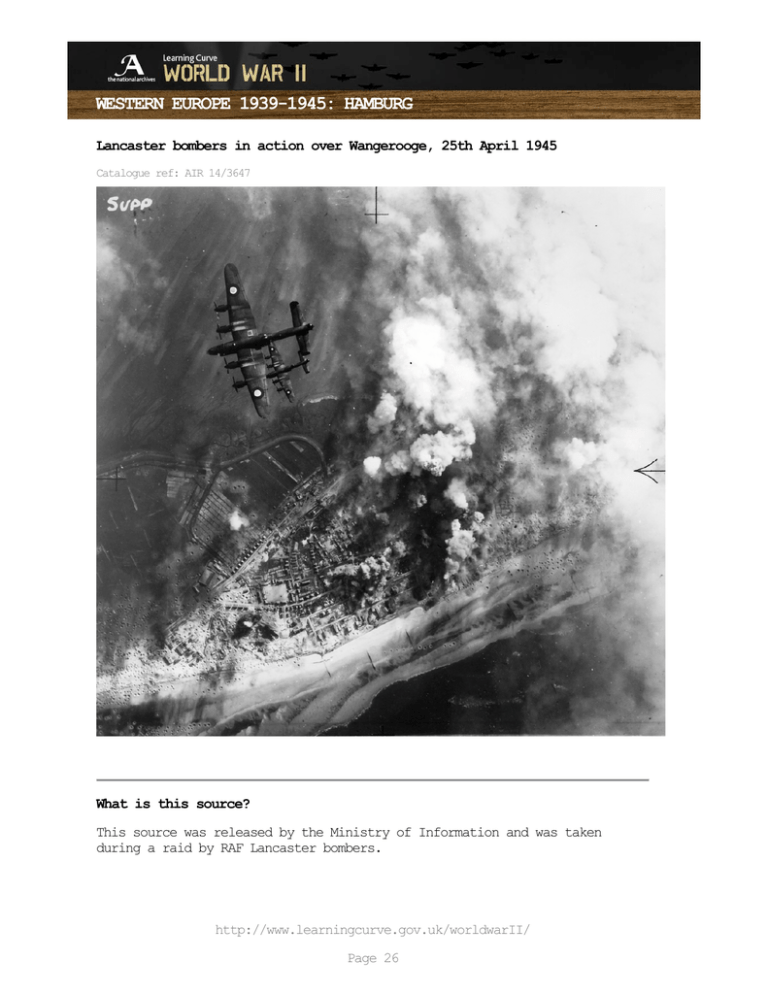
WESTERN EUROPE 1939-1945: HAMBURG Lancaster bombers in action over Wangerooge, 25th April 1945 Catalogue ref: AIR 14/3647 What is this source? This source was released by the Ministry of Information and was taken during a raid by RAF Lancaster bombers. http://www.learningcurve.gov.uk/worldwarII/ Page 26 WESTERN EUROPE 1939-1945: HAMBURG This photograph shows Lancaster bombers in action near Wangerooge, one of many Frisian Islands in the North Sea off the coasts of the Holland, Germany and Denmark. What’s the background to this source? The war began in 1939 and went well for Germany at first. By 1940 Hitler controlled most of Western Europe, apart from Britain. For a while the main attack on Britain was by air. He tried to destroy the Royal Air Force. When this failed Hitler switched to bombing British cities. From then until 1944 the only way to attack Germany was by air. The RAF and USA air forces did this relentlessly. At first the British were determined not to bomb civilian areas. However, by 1941 they realised bombing was too inaccurate to hit pinpoint targets and the losses of aircraft and aircrews were terrible. So they switched to area bombing. This basically meant flattening cities, taking out industries and civilian homes. It’s worth knowing that... There was strong support in Britain and the USA for the policy of bombing. However, the public were probably not aware of the terrible conditions and appalling losses suffered by bomber crews. Losses among bomber crews were around 50%. This was a far higher rate of casualties than any other service in either the First or Second World Wars. US bomber crews were allowed to leave the service if they survived 25 missions. How does this source help us to understand why the RAF bombed German cities? 1. What does this photograph tell the historian about the experiences of the bomber crews? 2. Can these source(s) be used to support any of the viewpoints A-D for your debate? http://www.learningcurve.gov.uk/worldwarII/ Page 27
